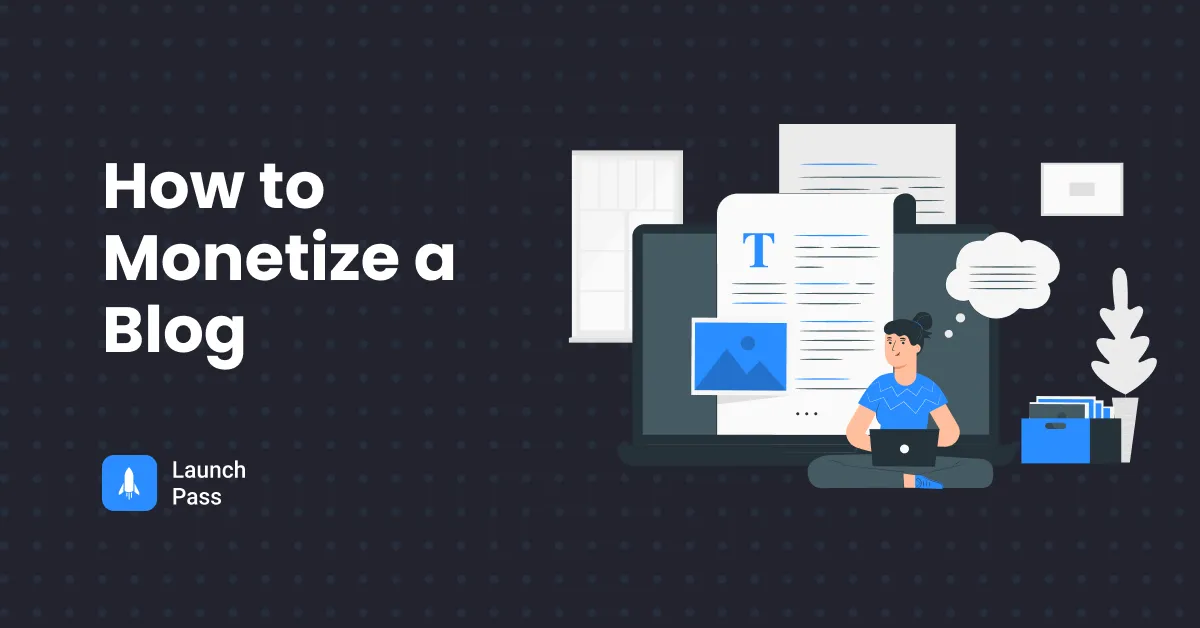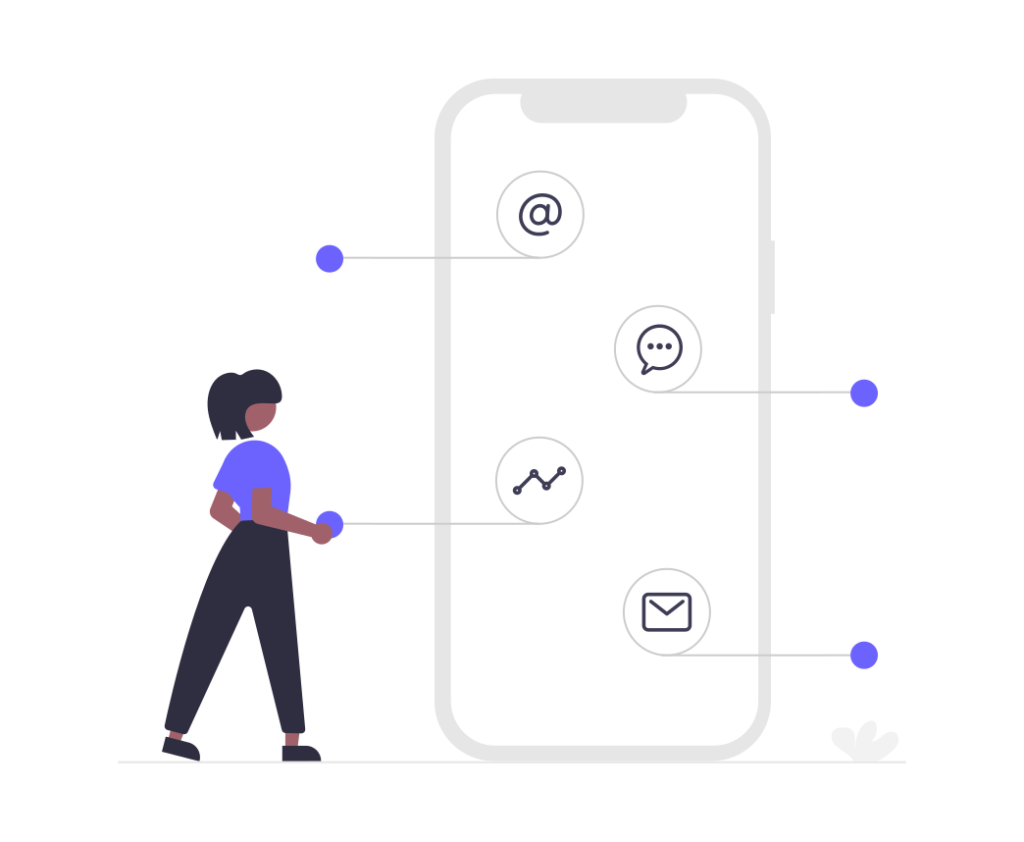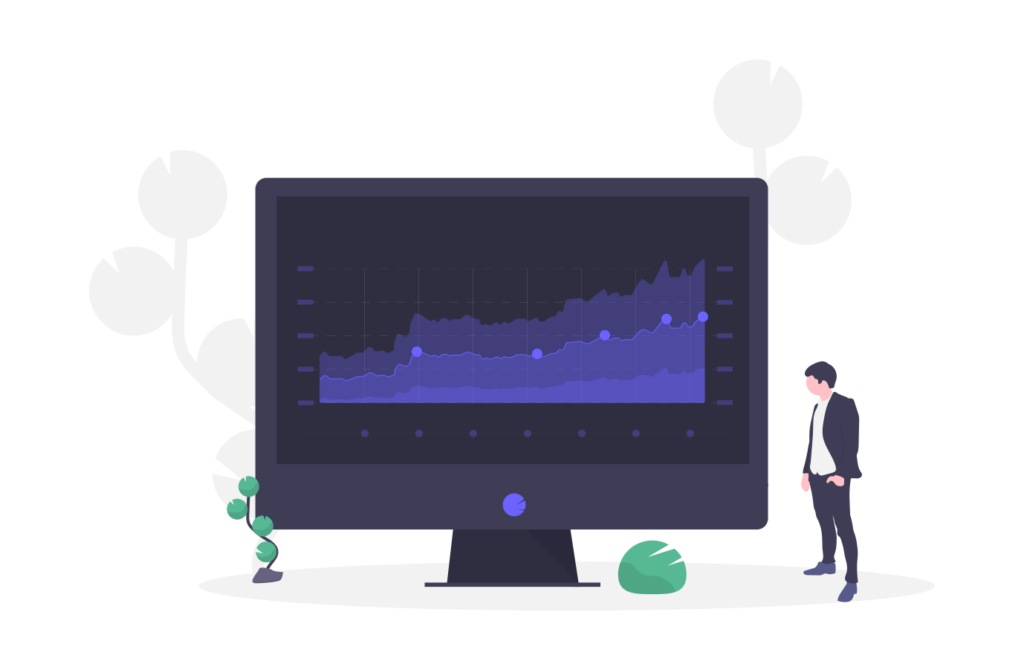By Dan • 4 min read

You’ve seen them, read them and possibly have written some of your own. Blogs are a dominant form of content that commonly exists as an extension of a website or as a stand alone medium. They’ve become quite popular since they’re a great way to implement SEO and gain more traffic and in turn, customers. In fact:

However, there’s so much free online content. So much so that you need to provide great value to have users engaged and hopefully convert. After all, the goal is to gain customers. In this article, we’re going to look at how to monetize a blog, strategies to use, and platforms to bring it to the next level.
While blogs are inherently free content, there are indirect solutions for how to monetize a blog. So in this case, we’re not actually selling the blog content, but we’re providing an offer as an extension of it. We’ll dive into this more later.
The most straightforward way on how to monetize a blog is through ads. Generally speaking, you’re not going to be driving much ad revenue from your blog unless you’re pulling in serious numbers, but it’s definitely possible. Advertisements are good because they don’t take a ton of effort to implement, but at the same time, it doesn’t really help grow your community or customer base, and the revenue you gain is fairly linear.
Similar to advertising, affiliate marketing works to promote another brand’s product, but using different means. Where advertisements have a blanket statement whether it be a banner or pop-up, affiliate marketing puts more on the blogger to promote a product to their viewers. This could generate more content for the blogger, but requires more effort and doesn’t necessarily generate more customers.
This strategy focuses on growing your customer base, without involving external brands. Members-only content is a great way to pique interest in efforts to gain conversions and customers. This method stems off of original content that you create but does it in a way that “gates” higher-value items.
You can provide a ‘taste’ of content that is part of a premium members-only community, and follow up with a call-to-action such as “Continue”, “Read more”, etc. The goal is to gain interest in the portion that is free and incentivize them to seek the premium offer.
Similar to members-only content, you can offer a “freemium” model, where you can simply deliver different streams of content to general readers versus premium access members. Maybe your blog offers more generalized advice on the best stocks to buy, but your premium community has add ons like real-time alerts, one-on-one coaching, and more.
The natural incentive to have the full package can help drive conversions. It’s a freemium because you’re offering something free, but the full offer lies behind a premium subscription or membership.

Now that you know how to monetize a blog, let’s get it connected. The easiest way to do this is to use software with the built in functions ready to go.
Whether you are opting to create a premium community as an extension of your blog, or are opting to leverage advertising or affiliate marketing, there are tools available to you so you don’t have to start from scratch. Mediavine is a popular platform for advertising, while Rewardful can help with referral and affiliates.
If you opt for going the route of creating a premium community to monetize your blog, LaunchPass can be a good option for you. We’ve successfully facilitated communities and businesses ranging from fashion, NFT, crypto, trading and finance, to cook groups and podcasts, and are the preferred platform for so many creators. If you want to dip your toes, you can start your free trial here.
Create and manage a subscription based community with LaunchPass.
Get started for freeCreate and manage a subscription based community with LaunchPass.
View pricingCreate and manage a subscription based community with LaunchPass.
Get a demo